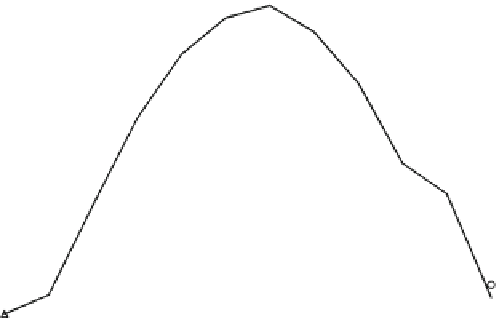Geography Reference
In-Depth Information
30
1.5
Temperature
Difference
between year
2010 and 2100
Simulation
Temperature
25
1
20
0.5
15
0
10
-0.5
5
-1
0
-1.5
-5
-2
-10
-2.5
-15
-20
-3
1
2
3
4
5
6
7
8
9
10
11
12
Simulation temperature of year 2010 (TEM2010)
Simulation temperature of year 2100 (TEM2100)
Temperature Difference:TEM2100 - TEM2010
Fig. 7.11 Comparison of simulated monthly average temperature at 2 m above the ground in
year 2010 and year 2100 in the study area
spring, snow will melt and the solar radiation is not very high, the warming effect
due to the evapotranspiration reduction of evergreen needle-forests cannot be offset
by the cooling effect due to the increase of surface albedo, and consequently the
monthly average temperature will increase by 0.86C in the spring. In general, the
result indicated that the high albedo resulting from deforestation of boreal forests
has negative impacts on the temperature, i.e., boreal deforestation will make the
temperature decrease, especially during the snow season.
7.2.3 Concluding Remarks on Case Study of Boreal
Deforestation in European Russia
The land cover change in the study area, which was mainly characterized by the
conversion between boreal forests and croplands, will lead to significant change of
the near-surface temperature, especially in the next century. It will make the
regional near-surface temperature decrease by 0.58 C in future 100 years
(0.0058 C/year on average) with the temperature change varies greatly in dif-
ferent seasons. The temperature changes most drastically in the winter, with an
average decrease of 1.81 C. And the temperature will decrease by 0.30 C in the
summer, while in the spring it will increase by 0.87 C. The temperature change is












































